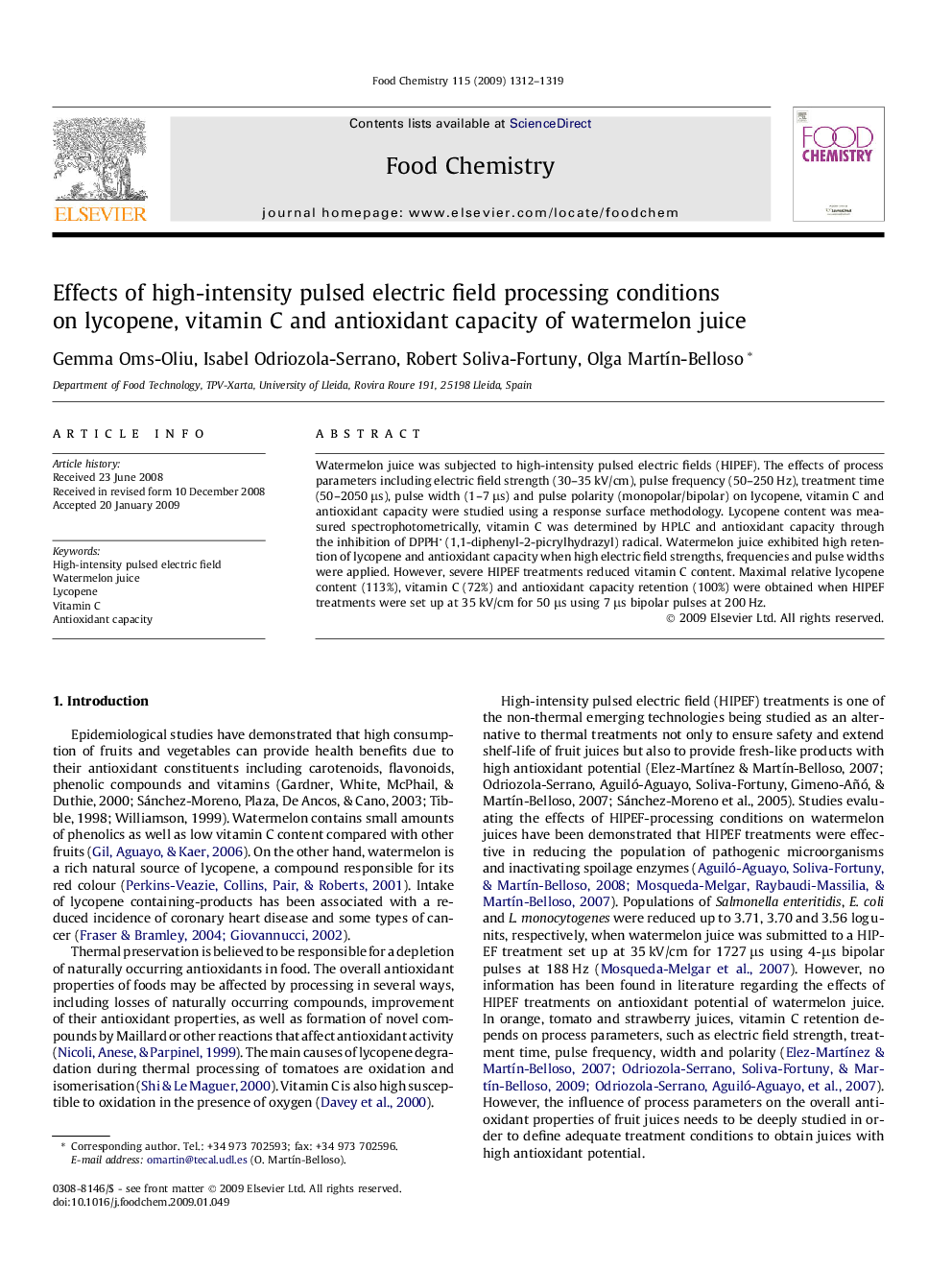| Article ID | Journal | Published Year | Pages | File Type |
|---|---|---|---|---|
| 1187376 | Food Chemistry | 2009 | 8 Pages |
Watermelon juice was subjected to high-intensity pulsed electric fields (HIPEF). The effects of process parameters including electric field strength (30–35 kV/cm), pulse frequency (50–250 Hz), treatment time (50–2050 μs), pulse width (1–7 μs) and pulse polarity (monopolar/bipolar) on lycopene, vitamin C and antioxidant capacity were studied using a response surface methodology. Lycopene content was measured spectrophotometrically, vitamin C was determined by HPLC and antioxidant capacity through the inhibition of DPPH (1,1-diphenyl-2-picrylhydrazyl) radical. Watermelon juice exhibited high retention of lycopene and antioxidant capacity when high electric field strengths, frequencies and pulse widths were applied. However, severe HIPEF treatments reduced vitamin C content. Maximal relative lycopene content (113%), vitamin C (72%) and antioxidant capacity retention (100%) were obtained when HIPEF treatments were set up at 35 kV/cm for 50 μs using 7 μs bipolar pulses at 200 Hz.
